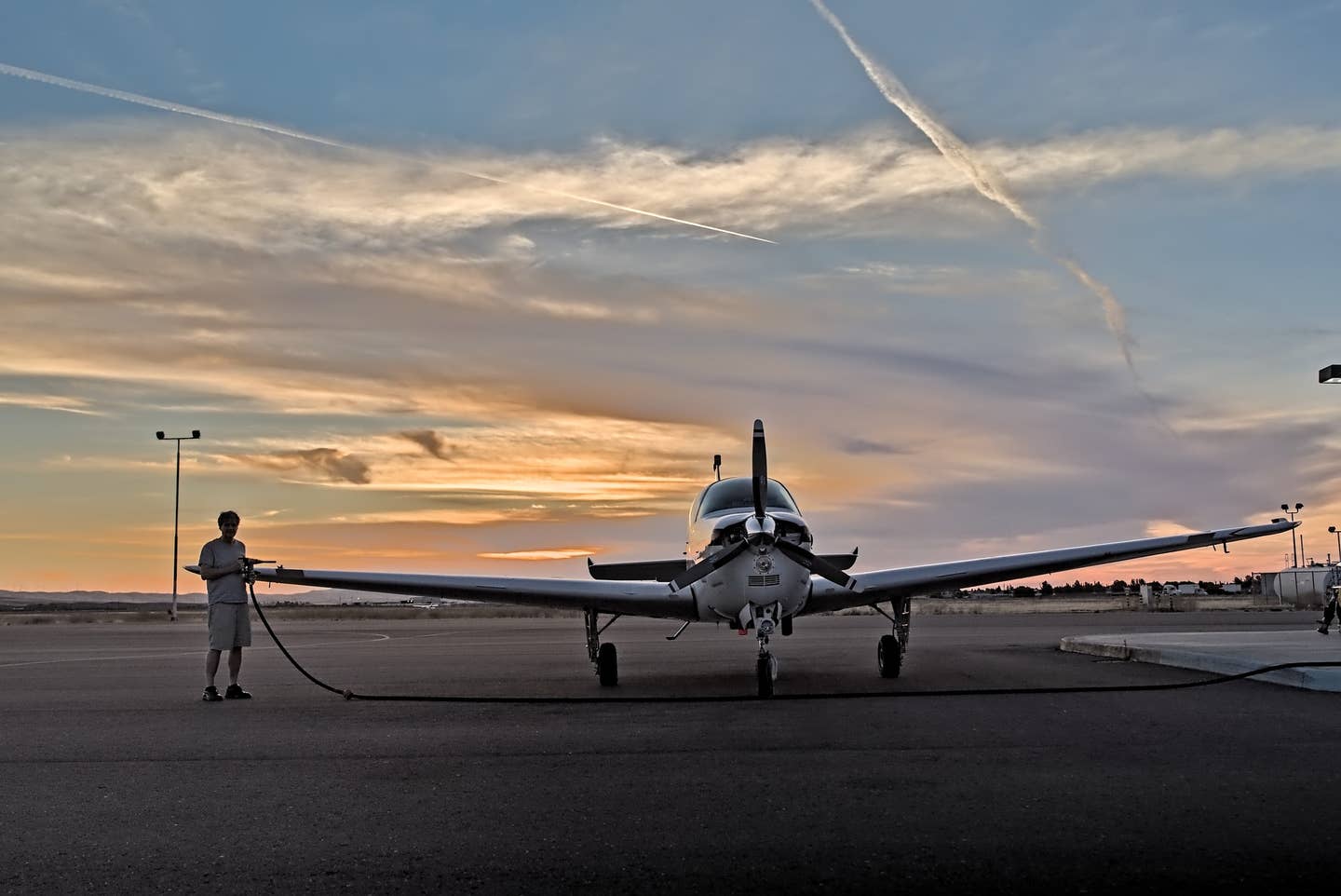Another Unleaded Avgas Contender Goes Into Full-Scale Testing
The LyondellBasell/VP Racing UL100E fuel becomes the first to pass a key PAFI durability test.

Airplanes with engines that need higher octane fuel, such as the Beechcraft Bonanza, will need one of the candidate fuels that pass testing. [Credit: Kim Hunter/pixabay]
The FAA delivered an early holiday present to the general aviation industry on Wednesday, by clearing the LyondellBasell Industries/VP Racing unleaded UL100E avgas developed for piston airplanes and helicopters to move ahead into full-scale engine and flight testing.
What triggered the approval? Turns out the fuel has passed a 150-hour engine durability test under the Piston Aviation Fuels Initiative (PAFI), an industry and government testing program first launched in 2014. The LyondellBasell/VP Racing UL100E now becomes the first unleaded fuel to move into this phase of testing under the PAFI terms. Every entity in the PAFI program is working diligently towards a replacement for 100LL avgas—specifically for those airplanes with the higher compression engines that require higher octane than the 94UL unleaded avgas currently on the market.
“This is another important milestone for a safe general aviation transition to unleaded fuel and for our goal to eliminate lead emissions by the end of 2030,” said Lirio Liu, FAA executive director of aircraft certification service and government co-chair of the Eliminate Aviation Gasoline Lead Emissions (EAGLE) government-industry partnership. “The joint industry/government effort continues to make strong progress.”
The General Aviation Manufacturers Association and Aircraft Owners and Pilots Association, both part of EAGLE, also chimed in, saying that they will be “applauding the news of the first unleaded fuel candidate to successfully pass the most rigorous Piston Aviation Fuels Initiative initial detonation and 150-hour engine durability test phase, and continued progress toward an unleaded future.”
READ MORE: Unleaded Avgas Approved GA Fleetwide
The PAFI program will evaluate the fuel on various characteristics, to include: engine durability and detonation, aircraft performance, material compatibility, and other environmental factors.
“The LyondellBasell/VP Racing’s achievement marks an important waypoint on the path to a more environmentally friendly future for aviation fuel and demonstrates the progress we’ve made through our government and aviation community partnership,” said Curt Castagna, president of the National Air Transport Association (NATA) and the industry co-chair for the EAGLE initiative. “EAGLE celebrates this milestone and looks forward to more opportunities to recognize industry ingenuity and innovation.”
Next stages for the LyondellBasell/VP Racing avgas include engine and airframe testing with 10 engines and eight aircraft, which is expected to take 12 to 18 months, according to the various releases. The UL100E fuel happens to be one of four unleaded fuel candidates within the test program. Now, if one of the fuels completes testing successfully, and the American Society for Testing and Materials (ASTM) publishes a production specification, the next step for the FAA would be to issue a fleet authorization, similar to that which it has already presented to GAMI for its G100UL.

Subscribe to Our Newsletter
Get the latest Plane & Pilot Magazine stories delivered directly to your inbox






